by Jayanath Colombage, LAP Lambert Academic Publishing, September 24, 2016
EAN: 9783659865756
An Academic Paper with a Few Nuggets, But Not a Naval History Book
Jayanath Colombage joined the Sri Lanka Navy as an officer cadet in 1978, became Commander of the Navy in 2012 and retired in 2014 as an admiral. He was appointed Secretary to the Foreign Ministry by Pres. Rajapaksa in August 2020. He has been decorated with Rana Sura Padakkama for gallantry and awarded with many other medals that include Vishista Seva Vibhushanaya and Utthama Seva Padakkama. He was the first doctoral graduate of the General Sir John Kotelawala Defence University, with this book as his thesis. He also holds MSc on defence and strategic studies from Madras University and MA on International Studies from Kings College, London.
He is a visiting lecturer at the University of Colombo, Defence Services Command and Staff College (Sri Lanka), Kotelawala Defence University, Bandaranaike Center for International Studies and Bandaranaike International Diplomatic Training Institute. He is a Fellow of Nautical Institute, London UK. Admiral Colombage is a Guest Professor at Sichuan University and Leshan Normal University in China and an adjunct professor at National Institute of South China Sea Studies, Haikou, China. In addition. He has been a guest lecturer in several key universities and training institutes in Bangladesh, India, Japan and Pakistan. He has also been an editor and reviewer of a number of internationally renowned academic journals.
Sea seized
by Sam Bresnick, Daily News, January 23, 2017
Admiral Dr. Jayanath Colombage joined the Sri Lanka Navy as an officer cadet in 1978. Over the years, he held various sea, land, and amphibious commands, and became Commander of the Navy in 2012. He retired from the Navy in 2014, and worked to attain a PhD in Philosophy from Sir John Kotelawala Defence University. He is the first and so far only person to attain a PhD from that university.
The result of his academic struggle is his PhD thesis, entitled Asymmetric Warfare at Sea: The Case of Sri Lanka, which was recently published by Lambert Press and is available in Vijitha Yapa book shops throughout Colombo.
The following is an interview about his book and on his views on the complicated nature of the maritime aspect of the civil conflict.
Q: Just to begin, for people who aren’t so aware of the subject matter, can you go over what you mean by asymmetric warfare in the naval context?

Admiral
Dr. Jayanath Colombage
|
A: The normal meaning of asymmetric is the disparity between forces. In the Sri Lankan context, we had a battle between the Sri Lanka Navy (SLN) and the Sea Tigers. Now, the SLN was a big organisation with harbours, ships, lots of manpower, and structured training. Whereas the LTTE Sea Tigers were quite a small organisation. They did not have any sheltered harbours, they did not have any big ships. They had small boats and few machine guns. So, there was a huge asymmetry between the forces of the SLN and the LTTE, for which I will use the term Sea Tigers. Asymmetries were seen in the force structure, the equipment, the platforms (ships). Now, in order for the weaker force, the Sea Tigers in this matter, for them to become equal, or to defeat the SLN, they had to use various asymmetric tactics. Now, they used these tactics at sea. In normal guerilla warfare, guerillas are normally a smaller organisation, so they adopt guerilla tactics to fight with a conventional army. Similarly, the Sea Tigers used these asymmetric tactics at sea to match the power of the SLN.
Q: Can you further explain what exactly those asymmetric capabilities of the Sea Tigers? What made them so difficult to deal with?
A: The first thing is they only had small boats and they did not have sheltered harbours or big ships. They developed certain asymmetric tactics. One thing is the suicide boat. These became the most potent weapon that was in the Sea Tiger arsenal. I would compare suicide boats to anti-ship missiles with a human brain. This was very effective. Then, another tactic they developed was swarming. This was developed by the Sea Tigers, and the main idea was to always guarantee numerical superiority at sea, and to concentrate overwhelming firepower. For example, when the SLN had one or two naval boats patrolling, they would deploy about twenty boats that would come at you.
Out of this twenty, they would have three or four suicide boats. It was difficult to differentiate the attack crafts from the suicide boats. About 20 boats concentrating their firepower on one target is dangerous, and it improved their chances of success. There were times when we lost a number of platforms due to swarming tactics.
 There were times when we had to withdraw from battles because of their overwhelming numerical superiority and concentrated firepower coming from multiple directions and aimed at a bigger target. They would encircle the SLN ships. The Sea Tigers also pioneered the use of underwater suicide saboteurs. Divers would carry a pack of explosives, maybe 50 kilos. He would swim a long distance to where the SLN ships were, and once he was underneath the ship, he would hang onto it and explode himself.
There were times when we had to withdraw from battles because of their overwhelming numerical superiority and concentrated firepower coming from multiple directions and aimed at a bigger target. They would encircle the SLN ships. The Sea Tigers also pioneered the use of underwater suicide saboteurs. Divers would carry a pack of explosives, maybe 50 kilos. He would swim a long distance to where the SLN ships were, and once he was underneath the ship, he would hang onto it and explode himself.
Yet another development was the improvised underwater explosive devices. The most famous example of this is the limpet mine, which had a magnet that could attach it to the hull of a ship and be detonated remotely. They also did not keep their boats in the water. We would expect the boats to be in the water, but after launching an attack, they would withdraw the boats onto land. Another one was to take cover in the fishing boat clusters to avoid detection.
Though limpet mines were used during World War Two, they were not used in similar contexts. These capabilities were pioneered by the LTTE. No other terrorist organisation in the world has done any of the things that I just mentioned. Al Qaida conducted a suicide boat mission once on the USS Cole.
Q: Can you talk a little about the coordination capabilities of the LTTE? You focus on how they were better coordinated at the beginning of the conflict than the SLN.
A: They were one organisation with one commander who had a grand vision and objective to have a separate state. They also understood the importance of maritime strategy as a key component of their grand strategy, whereas I think Sri Lanka, unfortunately, did not give that much emphasis to the maritime strategy. So they understood the maritime strategy, which was part of their overall strategy. They also had a recruiting advantage because many of the LTTE cadres came from fishing communities. These fishermen were born there and knew the sea very well. The navy, on the other hand, the majority of naval guys came from the interior of the country where they were not exposed to life at sea until they joined the navy. When you know the sea, it’s always easier to coordinate. They also selected the best leaders to head the Sea Tiger Unit, and there was continuous coordination of the whole unit because Prabhakaran gave prominence to the Sea Tigers. He understood the importance of the Sea Tigers to his overall strategy. The coordination, organisation, and propagation of the Sea Tigers were far better than those of the SLN.
Q: What were the organisational drawbacks of the SLN that allowed the Sea Tigers to gain an advantage?
A: If you look at organisational drawbacks, you have to look at three separate categories: on the policy level, the strategic level and the tactical level. When you talk about the policy drawbacks, I have to say that policy derives from the government. The Navy is an instrument of politics. You have to derive the policy from the government. I believe that there was a clear lack of policy coming from successive governments towards the Navy that made it difficult to develop, empower, and enhance the Navy. Being an island nation, we should have given priority to the Navy.
Q: Are you talking about enhancing naval equipment or expertise?
A: Everything, including ships, manpower, training, equipment. These are policy level drawbacks. Leadership was also an issue in government and SLN. Throughout the war, there were many governments and many naval commanders.
There was no continuation because the policy was not continuous. There was no grand strategy incorporating maritime strategy in a substantial manner. Whereas Prabhakaran had a grand strategy to develop his small navy to achieve Eelam. On the other side, we had mostly ad hoc strategies. The governments would focus on developing strategies for the time that they were in power, usually between four and six years. These strategies were shortsighted. That is not the best way to go about winning a sustained fight.
Because there was no strategy, nobody had the courage to develop the SLN in a substantial manner. Mostly, the development of the SLN was reactive. When the Sea Tigers would do something or improve their capacity, we would try to come up with a solution. When they increased their speed, we increased our speed. When they acquired more guns, we did the same. The initiative was with the LTTE. They were calling the shots. Then another major organisational drawback was our lack of proper intelligence.
We were dependent on other sources for intelligence. The police, army, and air force all had their own intelligence apparatuses, but maritime intelligence is different. Not everybody can understand the ocean. In the maritime intelligence domain, we were quite low. We really did not know what was happening around our coast until they came and hit us.
We also did not use highly advanced technology and equipment, like sensors and automatic fire control systems. We were quite happy with what we had, and we never thought of making a quantum leap to acquire better technology. This hampered our early efforts. The intelligence community matured and began working together for a common purpose. After 2005, there was one chief of national intelligence, and all the agencies reported to him. This allowed us to acquire actionable, precise intelligence.
I also have to say that we underestimated the enemy quite a bit. We thought the Sea Tigers were a small organisation that could not become a threat to the country. We thought they would not be able to succeed in their overall mission. This goes along with, not understanding the potential of the asymmetric maritime threats. The SLN was raised, trained, and developed as a conventional navy.
Q: What was that maritime strategy?
A: All this time, we were underestimating the enemy. We were saying, no, the enemy does not bring their supplies from the sea. We said they took their weapons from the Sri Lankan military. But we realized one key piece of sustenance for the LTTE was their logistics network. A major development for the SLN was the enhancement of maritime intelligence, and this took place in 2005.
When we developed our intelligence, we came to know a lot about the LTTE’s logistics network. That network had three components: raising money, purchasing weapons, and transporting goods and people. The SLN could not do much about their money or purchasing weapons. The only thing we could do was look after the ships. The LTTE used to stockpile their ships in Indonesia and other parts of the ASEAN region.
Then, the ships would come about 200 nautical miles from the coast of Sri Lanka, and then they would use small boats to transfer the weapons to the country. Until about 2005, we were trying to prevent these small boats from landing the weapons. When we apprehended one small boat, another ten would get through.
So we realized that this strategy was not going to work. We wanted to attack the logistic network at sea, and that meant going after the warehouse ships. This was a major strategic development. And then, when we started attacking their logistic network within the exclusive economic zone of Sri Lanka, the LTTE moved further from the coast. The navy focused on following them further away. That was a major game changer. In September and October of 2007, the SLN went all the way to the edge of Australian territory, and we destroyed all four of the LTTE ships.
Then, the LTTE was very good at fighting in the coastal areas. They had a large number of boats, and they built these boats by themselves. They would bring the outboard motor from elsewhere, and then they would use these small boats with their weapons to carry out many attacks. The SLN realized that our fast attack crafts were not the best platforms on which to fight the small boats.
We presented a bigger target with our large boats. The Sea Tigers were basically wave riding because they were in small boats. It was very difficult for us to detect and engage the Sea Tigers, but it was very easy for them to see a bigger target and just fire. After 2005, we became brave enough to employ the same tactics to attack the LTTE, and we started using small boats. We began building the same types of boats the LTTE had. The LTTE had proven hull designs.
We knew how good they were. There were two types of boats that they used, one we called the inshore patrol craft (IPC), and the other one was the arrow boat, which was a small fiber glass dinghy fitted with high-powered outboard motors and a number of guns. We built both of these crafts in our own shipyards. We were able to build them at a much faster rate, much cheaper rate, and the boats were of a higher quality.
As I said, one of the Sea Tigers’ asymmetric tactics was to deploy large numbers of boats to attack our boats. Now, when the LTTE launched ten boats to attack our large boats, we would launch 40 boats. We regained the numerical superiority. That confused the LTTE, because our big ships would withdraw and then forty boats would attack them. Now we both are on an equal level.
We carried 23 millimeter guns on these small boats, and the LTTE had the same calibre. In the small boats there were four people, and in the slightly larger boats there were between six and eight people. Until this time, the SLN and Sea Tigers would alternate victories in sea battles, and the overall fight would go on. After 2006, when we changed our strategy, they stopped coming to sea to fight. By about 2009, the fighting at sea became almost zero.
Another tactic we used after 2005 was to deploy better harbour defences. Before 2005, the LTTE was very clever in attacking our harbours. They attacked Trincomalee Harbour, Kankesanthurai Harbour and the Port of Galle. There were a few attempts on the port of Colombo. We felt that we were quite safe in the harbour, and we had various systems to protect the harbour, but they would creep in and plant an explosive and go.
Now, we realized with the LTTE, once they launch an attack, it is very difficult to stop it, because usually they would come in a suicide mission with one way communication. We realized that if we wanted to defend the harbours, we could not do it by staying inside the harbour. In order to protect the Colombo harbour, we started dominating the coastal areas, sometimes up to 30 kilometres on either side of the harbour. So, for example, we dominated the coast up to Negombo, and every hundred metres there was a sailor. And similarly, we dominated the coast down to Panadura in the south.
We also monitored the fishing: who goes out, who comes in, how many are outboard motors, whether they are carrying anything illegal. We prevented the LTTE from launching an attack, and that was a success for defending the harbours. This was all part of the grand strategy.
Another issue was that we had, up until 2005, depended a lot on foreign suppliers to give us ships, weapons, systems, everything. We did not do much research and development work. We then remedied this and experimented with electronics, with communication, with gun mounts, with guns, with fire control systems. These were serious innovations.
Q: Can you discuss the advent of underwater defenses?
A: We had a situation where the LTTE underwater saboteurs were targeting the ships in the harbour. And then we conducted many experiments aimed at preventing this. We even looked at using a measured pioneered during World War Two called the boom defense. That is to have a boom, and a net underneath to prevent divers from crossing. We had a few layers at times. We developed a system called throwing scare charges into the sea. Sound travels in water much faster than light or electromagnetic waves, so when you create an explosion underwater sound travels much faster. If there is a driver who hears an explosion, his eardrums would burst, and then he would get disoriented. We had sonars and fish finders, but we could not totally depend on these electronic systems, so we needed to take these proactive these measures.
 Q: What about changes within the SLN itself?
Q: What about changes within the SLN itself?
A: There is no doubt that the leadership of the SLN improved. We had a political leadership and military leadership, but they did not filter down. Promotions and appointments in the SLN were given on seniority alone. Once you acquire a particular seniority at the early stages of your career, you carry it forward. There’s no threat from anyone else. We decided that we had to start considering merit, performance, and not only seniority when promoting officers and giving appointments and then rewarding them. That gave an opportunity for the real battle leadership to emerge. Seniority was based on academic work but not really performance in battle. Should that carry so much importance 30 years later? No it should not.
That gave an opportunity for some very good officers who were extra brave. That produced results. Something else I want to mention is the increased synergy between the political and the military leadership. At first, the political leadership tried to take credit for everything. Some military leadership would try to take credit for himself or for his organisation. But we had a situation that allowed for more synergy between the military and the government. People were not worried about taking credit. It was a combined effort.
Ex-Sri Lankan navy chief Colombage narrates how the US helped destroy LTTE floating armories

Former Sri Lankan navy chief Adm. Jayanath Colombage. (File photo)
COLOMBO: Former Sri Lankan navy chief Adm. Jayanath Colombage has, in his recently published book Asymmetric Warfare At Sea: The Case of Sri Lanka, described how the United States helped the Sri Lankan navy destroy the LTTE’s “floating armories” by supplying vital satellite images of the location of these ship-borne warehouses.
The destruction of the floating armories helped the Sri Lankan navy win Eelam War IV in the sea, which in turn helped the Sri Lankan army win the war on land and the Air Force take on ground targets without fear of being shot down.
Based on his doctoral dissertation submitted to General Sir John Kotelawala Defence University here, the book helps debunk the general impression among nationalist Sinhalese that the US was out and out pro-LTTE, and that all that it did during Eelam War IV was to put pressure on the Mahinda Rajapaksa government to stop the war so that the Tiger chieftain, Prabhakaran, and his aides could be whisked away to a safe place.
The destruction of the “floating warehouses” had helped cripple the LTTE’s arms and ammunition supply network as these on-sea warehouses had come to play a critical role in the group’s survival in the context of the menacing encirclement that was taking place in the war zone on land – an encirclement which was constantly reducing the land area available to the LTTE to store its munitions.
In the asymmetrical land war that was going on in Sri Lanka, with the LTTE out-manned and out-gunned, the LTTE was using ammunition and area weapons-like artillery and mortars liberally to strike terror in the heart of the enemy.
It did not show the restraint and conservatism conventional armies generally show in using their ammo. For the LTTE, firing had to be well-targeted and also exceptionally heavy, to make up for the shortage of men and artillery pieces.
As Seelan, a former ‘Sea Tiger’ said: “When army fired a shell, we fired about 20 shells. We fired a lot of shells like mortars and artillery.”
The heavy shelling from the LTTE did have a devastating effecting on the Sri Lankan army. A former Army Commander said: “Casualties due to artillery and mortars were the heaviest on our side. I think it was more than 50 percent”.
Saga of the transformation of Sri Lankan navy
by P.K. Balachandran, Daily Mirror, Colombo, August 18, 2020
A sea change came about when the Rajapaksa regime recognized that the war against the Sea Tigers cannot be won if command over the sea is not established and the navy is not given its due and made pro-active, innovative and daring, says Adm (Rtd) Dr.Jayanath Colombage
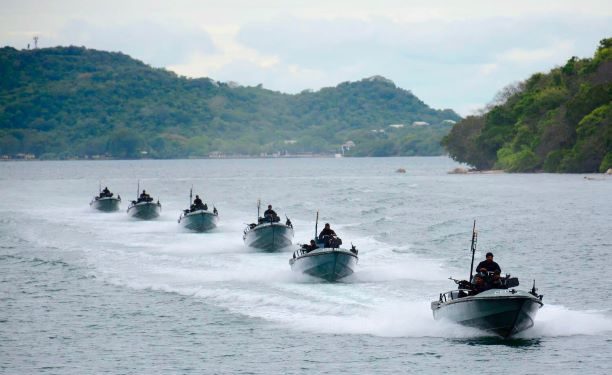
Sri Lanka navy’s Cedric class assault boats
In his book Asymmetric Warfare at Sea: The Case of Sri Lanka” Adm. Dr.Jayanath Colombage, former Commander of the Sri Lankan navy, who is now the country’s Foreign Secretary, tells the fascinating story of the transformation of the Sri Lankan Navy (SLN) from a small, poorly funded and non-innovative conventional fighting force to a spirited, innovative and well-armed force which, in just three years, broke the back of the intrepid and deadly Sea Tigers, the naval wing of the Liberation Tigers of Tamil Eelam (LTTE).
Adm.Colombage’s narrative begins with a candid account of the state of the SLN vis-à-vis the Sea Tigers during most the 30-year separatist war. The SLN was the underdog, suffering humiliations at the hands of the Sea Tigers, till the 2006-2009 Eelam War IV during which it emerged as the top dog to decimate the Sea Tigers.
 While accounting for past failures, Adm.Colombage says that successive Lankan governments (barring the Mahinda Rajapaksa regime which came into being in 2005) saw the war against the Tamil militants as a land war to be fought principally by the army. Although the adversary was using the sea to bring in supplies, initially using the Palk Strait and eventually the wide ocean, Lankan governments did not see the need to strengthen the navy. It was relegated to the margins and expected to little more than defend itself when attacked, not to go hunting for the adversary. The navy was not given the manpower and equipment go on the offensive. It was also trained to fight conventional battles, not maritime terrorist groups whose tactics were unconventional, cunning, ever-changing and gutsy. Due to the differences in strategy and tactics, the Sea Tigers managed to destroy 28 SLN vessels in encounters.
While accounting for past failures, Adm.Colombage says that successive Lankan governments (barring the Mahinda Rajapaksa regime which came into being in 2005) saw the war against the Tamil militants as a land war to be fought principally by the army. Although the adversary was using the sea to bring in supplies, initially using the Palk Strait and eventually the wide ocean, Lankan governments did not see the need to strengthen the navy. It was relegated to the margins and expected to little more than defend itself when attacked, not to go hunting for the adversary. The navy was not given the manpower and equipment go on the offensive. It was also trained to fight conventional battles, not maritime terrorist groups whose tactics were unconventional, cunning, ever-changing and gutsy. Due to the differences in strategy and tactics, the Sea Tigers managed to destroy 28 SLN vessels in encounters.
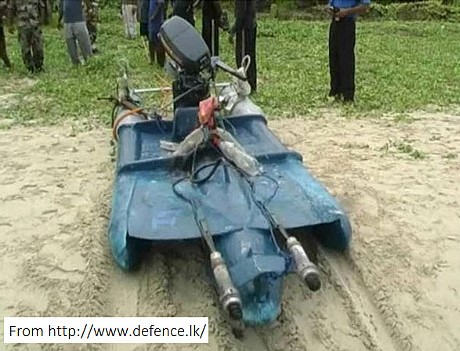
Sea Tiger human torpedo
In contrast to the Lankan State, the LTTE was a sea-oriented group from the very beginning. Its leader, Prabhakaran, and his initial band of followers, were sea farers from the fishing community of Valvettithurai. In contrast to Lankan strategists, Prabhakaran firmly believed that to fight the Lankan forces on land, he has to have command over the sea.
Therefore, the LTTE designed and appropriately armed small boats of four different kinds. Its suicide boats used stealth technology and were high speed and armored. The Sea Tigers used RADAR to ensure accurate firing. Besides, the LTTE acquired ocean-going vessels which cleverly combined legitimate business and arms smuggling, and acted as floating warehouses” on the high seas. The Sea Tigers had devised techniques to camouflage its gun-running vessels. To land its lethal cargo on the Lankan coastline, it used small boats disguised as fishing trawlers. Not short of ammo, thanks to its floating warehouses, the LTTE was able to rain artillery shells and mortar bombs to unnerve the Lankan army on the battlefront.
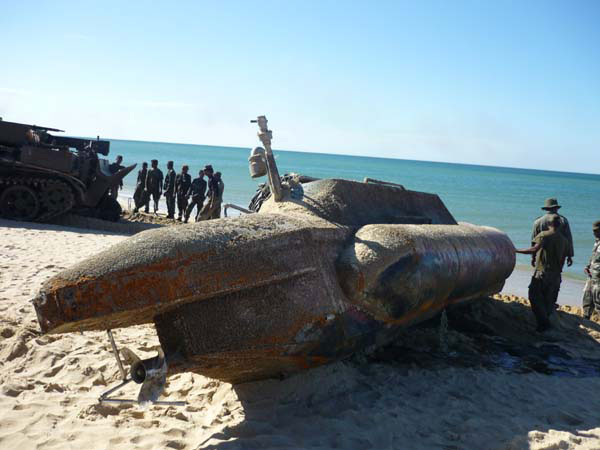
LTTE submarine, June 15, 2009
Not surprisingly, SLN’s lumbering vessels, including Fast Attack Craft (FAC), were overwhelmed by the Sea Tigers’ small, fast boats, attacking in swarms. The Sea Tigers also deployed suicide boats which conventional navies do not. It staged underwater attacks using modern equipment. The Sea Tigers not only attacked Lankan harbors but in 1997, even hijacked a vessel carrying 32,000 mortar bombs ordered by the SLN from Zimbabwe. That event showed the depth of the LTTE’s penetration into the Lankan defense Establishment. In contrast, Lankan intelligence gathering lacked penetration, was piecemeal and its use was uncoordinated, Adm.Colombage says. The air force did not undertake sea surveillance which could have helped the navy locate the floating warehouses long before September 2007 when they were located with US help.
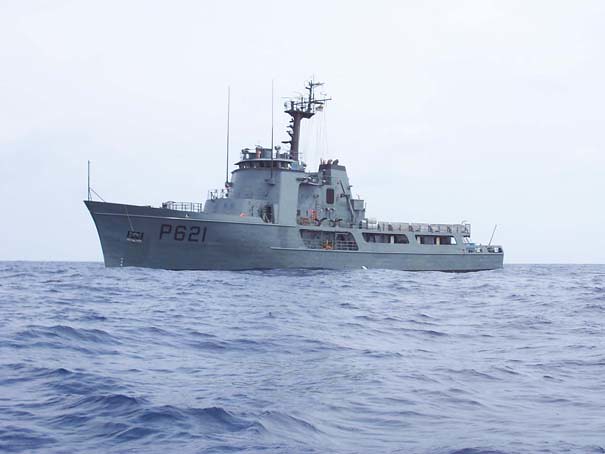
OPV Samudra
Sea Change
But come Mahinda Rajapaksa as President and his brother Lt.Col (Rtd) Gotabaya Rajapaksa as Defense Secretary in 2005, a sea change occurred. The Rajapaksas decided that there would be no more talks (or a ceasefire) with the LTTE and that the war would be fought to the finish regardless of pressure from global powers and the peace and rights lobbies.
The navy had to go for the kill. The navy Commander was ordered to be unsparing with his subordinates, even as he encouraged brainstorming to get the best ideas from his staff. The Commander personally selected officers for key positions on merit and not seniority alone.
The strength of the navy was increased from 36,000 to 54,000 and the budgetary allocation went up by more than 60% by 2007. The required equipment was ordered. Where imports of were costly, naval engineers devised alternatives. Old equipment were reconditioned to the optimal level.
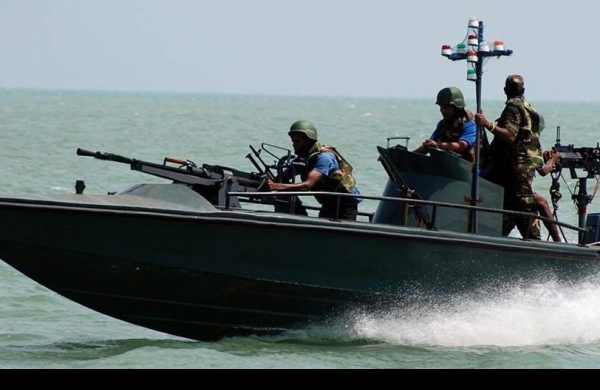
sri lanka navy fast boat
Tactics underwent a sea change with the SLN imitating the Sea Tigers and using small boats to penetrate the latter’s hideouts and confront them in swarms. Small boat production increased exponentially. The LTTE had to fight similar boats, similarly equipped and similarly-led but in much greater numbers. Guns on board Lankan vessels were enhanced through indigenous innovations.
The resources of the SLN were not only put to use, but enhanced. The Small Boat Squadron (SBS) was reactivated. The decision to acquire Offshore Patrol Vessels (OPV) – two from India and one from the US Coast Guard – and Fast Missile Vessels (FMV) from Israel, added to the reach, speed and punch of SLN vessels.
Following 9/11, the SLN used the Global War on Terror to get the US on board. The US said that it would help SLN locate the LTTE’s floating warehouses provided the SLN assured that it would not attack civilian vessels. The assurance was given. But the location of the OPVs was not easy as the LTTE had got wind of the SLN’s plan. It had stopped using satellite communication and kept off shipping lanes.
However, in September 2007, the US detected a target. But again, the SLN had an issue – the endurance of its OPVs so far from their base. SLN engineers solved such problems. The OPVs were then stationed in the calm waters of the equator to minimize wear and tear. Patrolling ships came to the equator to refuel and refit.

Sri Lanka navy’s Special Forces
The Small Boat Squadron (SBS) also participated in the destruction of the Floating Warehouses with their Combat Rubber Raiding Craft (CRRC) firing Rocket Propelled Grenades (RPGs). The LTTE weaponry which went to the bottom of the sea included 152mm,130 mm,122 mm artillery shells and120 mm mortar rounds. MV. Koshia itself lost 29,000 artillery shells.
Meanwhile ,in Sri Lanka, the electronic surveillance network was enhanced to enable the Navy Commander and field commanders to get a real time picture. At the Defense Ministry level, the older system of various intelligence units working independently and in an uncoordinated way, was replaced by regular interactions in which information was shared and actionable intelligence distilled and communicated to the right units. All equipment required was acquired even though the West and India refused to sell or gift weapons on political or human rights grounds.
Corruption in military procurement was a major issue in the Lankan armed forces during most of the 30-year war. But an end was put to it by the formation of the Lanka Logistics Technologies Ltd.,(LLTL) involving service Commanders and Chief of Defense Staff. The LLTL helped standardization of equipment ordered. Procurement was made a confidential process.
All these measures helped reverse the earlier situation in which the Navy was lagging behind. When the SLN was using 20 mm guns, the Sea Tigers were using 23mm. The FACs were therefore modified to carry a 30 mm gun and a 107 mm rocket launcher. 25 and 50 KW RADARs were installed. The Fast Gun Boats were equipped with modified Multi-Barrel Rocket Launchers (MBRLs) to enhance their destructive capability.
A drawback which dogged the SLN was a lack of understanding between the army and navy commanders. But the ground commanders remained in close contact with each other and worked together enabling mutual support,” Adm.Colombage recalls. Be that as it may, the net result was the total destruction of the Sea Tigers and the elimination of its leaders.
